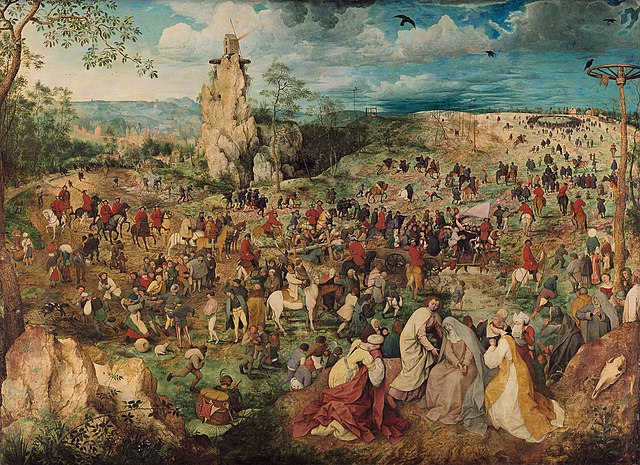For the 450th anniversary of the death of Pieter Bruegel the Elder, the Atomium will present an interactive exhibition about the Flemish Renaissance painter. Thanks to big reproductions of his work, the visitors will dive into the heart of the world of Bruegel. The exhibition Bruegel, a Poetic Experience presents both known and unexpected facets of his work and personality.
19 September 2019 – 13 September 2020, at the Atomium.
www.atomium.be/expo_bruegel
Pieter Bruegel the Elder
Pieter Bruegel the Elder (1525–1530 – 9 September 1569) was the most significant artist of Dutch and Flemish Renaissance painting, a painter and printmaker from Brabant, known for his landscapes and peasant scenes (so-called genre painting); he was a pioneer in making both types of subject the focus in large paintings.
He was a formative influence on Dutch Golden Age painting and later painting in general in his innovative choices of subject matter, as one of the first generation of artists to grow up when religious subjects had ceased to be the natural subject matter of painting. He also painted no portraits, the other mainstay of Netherlandish art. After his training and travels to Italy, he returned in 1555 to settle in Antwerp, where he worked mainly as a prolific designer of prints for the leading publisher of the day. Only towards the end of the decade did he switch to make painting his main medium, and all his famous paintings come from the following period of little more than a decade before his early death, when he was probably in his early forties, and at the height of his powers.
As well as looking forwards, his art reinvigorates medieval subjects such as marginal drolleries of ordinary life in illuminated manuscripts, and the calendar scenes of agricultural labours set in landscape backgrounds, and puts these on a much larger scale than before, and in the expensive medium of oil painting. He does the same with the fantastic and anarchic world developed in Renaissance prints and book illustrations.







